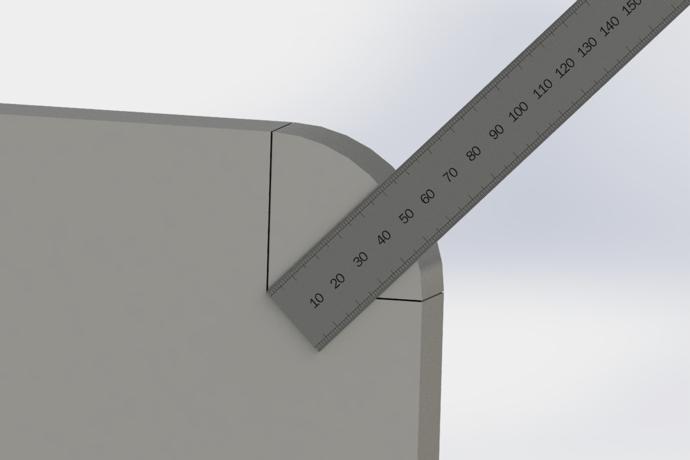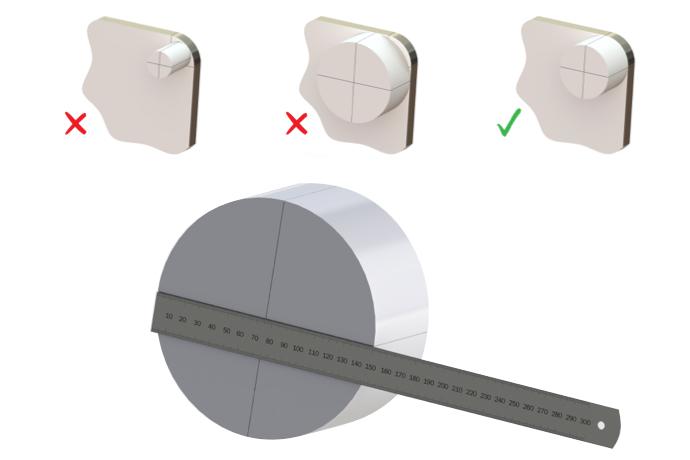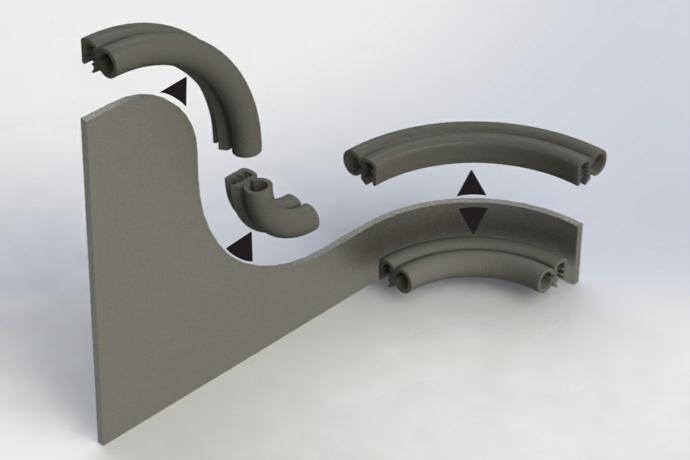A corner radius is the measurement of how rounded a corner is. Instead of a sharp 90 degree edge, a radius smooths the corner into a curve with the size of the radius determining how tight or broad the curve actually is. Small radii create subtle rounding, while larger ones make corners look softer and more circular. These corners can either be external, internal or sideways.
It may not be possible to bend some rubber profiles around very tight corners. This technical help guide provides two methods to determine the size of your radius so that you can make an assessment as to whether our seals will be suitable for your application.
We have also recorded a video demonstration that shows how you can use these principles to measure an external curve.
Option 1: Using a Ruler to Measure a Corner Radius

One way to measure the corner radius is to draw two lines where the curve starts to straighten. You can then measure the distance from the point where the two lines intersect to any part of the radius (ie, the curve of the corner).
For example, if this distance measures 75mm, the radius of the corner is 75mm.
If it is difficult to identify where the curve starts to straighten, place a straight object (such as your ruler) on the straight edge overhanging the corner. This will allow you to see the point where a gap starts to form under the ruler, showing the position of the start of the curve.
Option 2: Using an Item to Measure a Corner Radius

Another way of measuring the radius of the corner is to place a circular item (such as a plate, glass or tape reel) against the corner on your object. It is important that you choose the correct size item to ensure that you obtain an accurate measurement of your corner radius. The item needs to fit perfectly into the corner so that the curve of the item matches the curve of the corner. This may involve trying several circular items until you find one that is a good fit.
Once you have found an item that fits your corner, measure the diameter of the item as shown in the diagram. After you have taken this measurement, you can obtain the radius of your corner by dividing your measurement by 2.
For example, if your plate, glass or other item measures 150mm diameter, your corner radius will be 75mm (half of 150mm).
Bend Radius Diagram Definitions

A bend radius diagram is a visual guide that shows the minimum radius that an item, such as a rubber seal, can be bent without damage or performance issues. Bend radius diagrams for a number of our clip on edge trims, window seals and rubber extrusions can be found in the bottom right hand corner of the downloadable product drawing on each product page.
Depending on the type of item, these products can often bend differently in different directions. These figures indicate the minimum radius that the seal can be bent for each origination, whilst still allowing it to fit correctly without affecting the sealing face.
Whilst these diagrams provide the minimum recommended bend radius, it is sometimes possible to adapt the seal so that it can be used around tighter corners. One option is to cut and mitre the profile by cutting small triangles out of the inside to reduce buckling as it is bent. With clip on edge trims it is also possible to insert a small piece of expanded neoprene cord inside the sponge sealing bulb. This will help reduce the bulb from compressing.